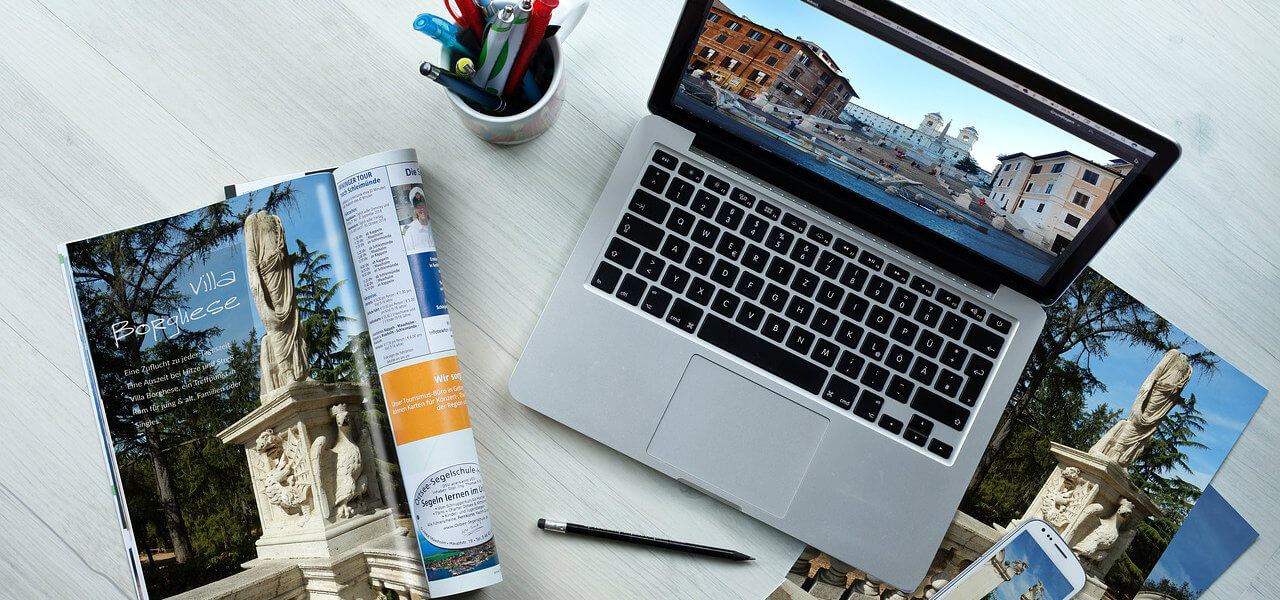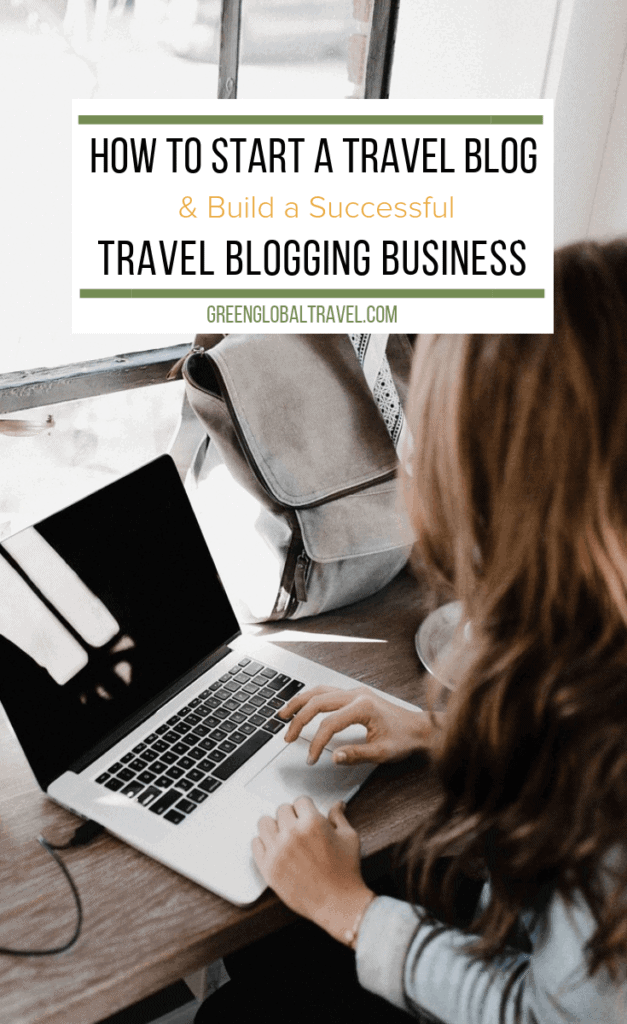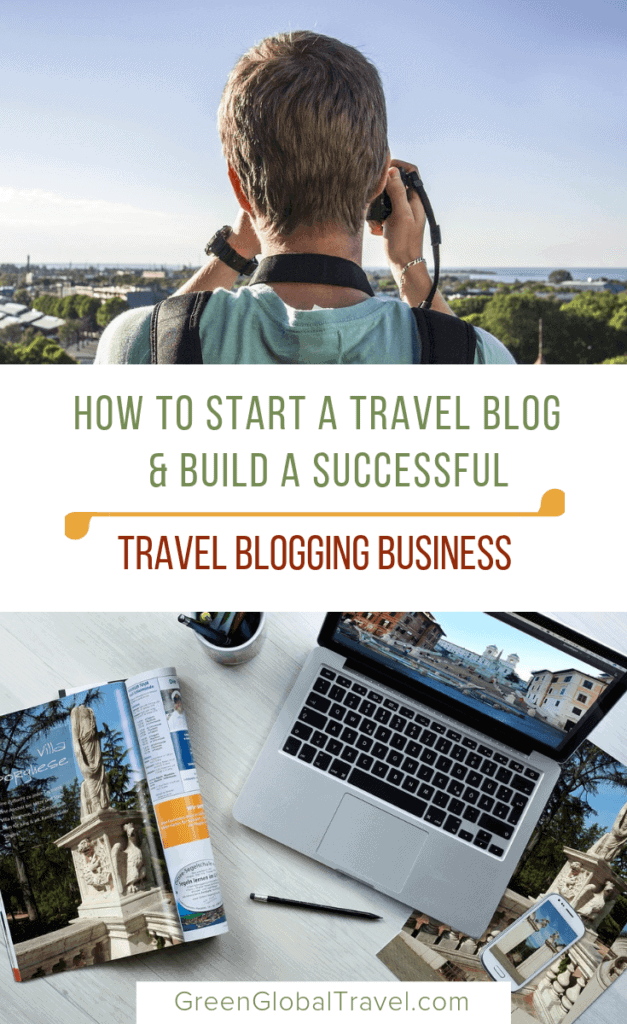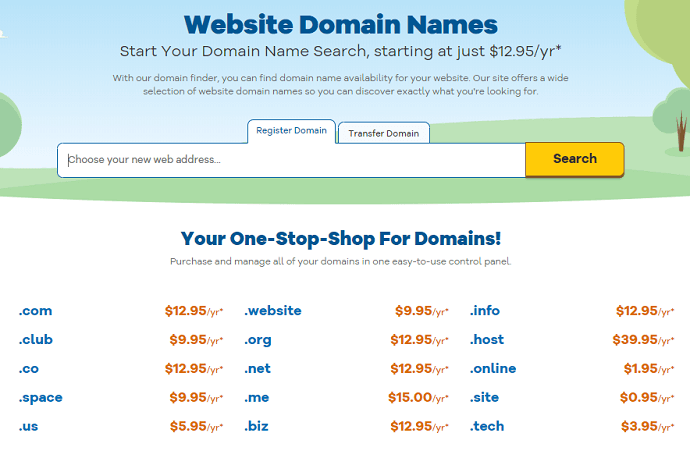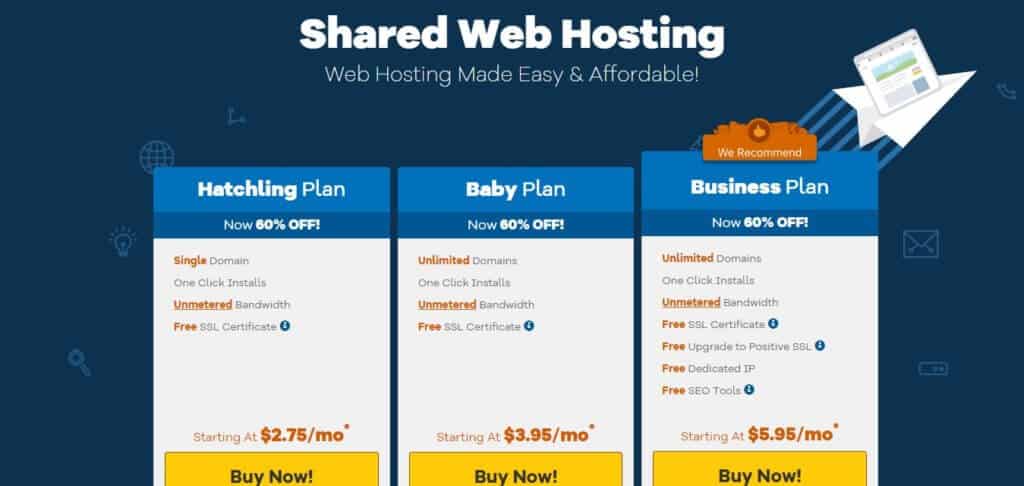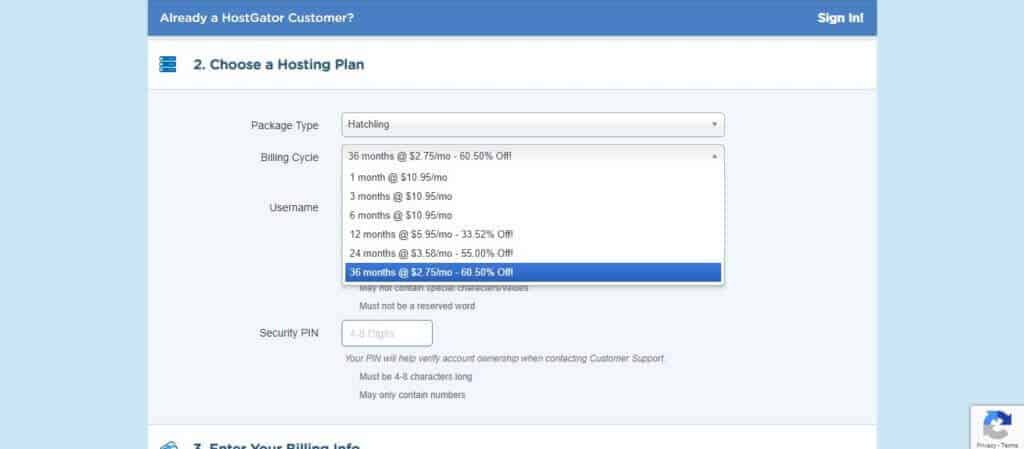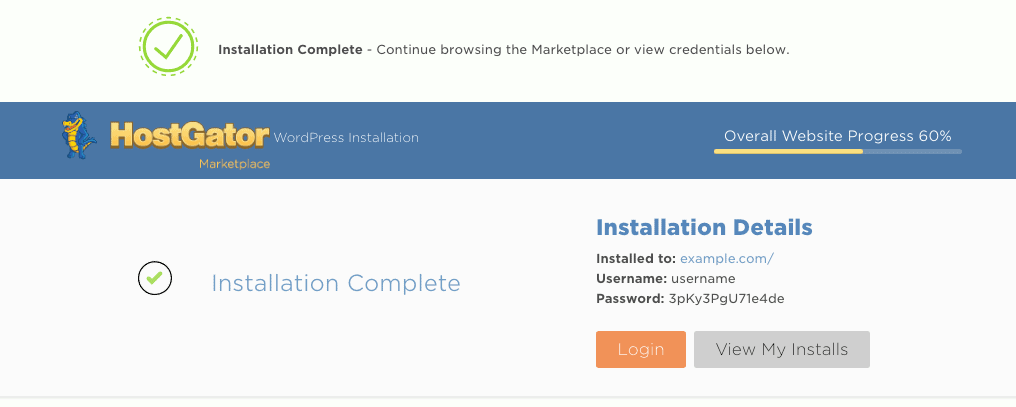When Mary and I came up with the idea for Green Global Travel at our lodge in Tortuguero National Park, Costa Rica, we had no clue how to start a travel blog.
It was the summer of 2010, and at that time we hadn’t even read a single blog. We knew nothing about html coding or social media marketing. We’d never even heard of WordPress, so we created our blog on a complicated content platform called Joomla. And unfortunately, there weren’t a lot of great guides on how to start your own blog at that time.
So instead, we relied on our professional and entrepreneurial experience. I had spent 15 years developing content strategy and editing magazines and newspapers, while Mary had spent 10 years managing a small corporate psychology business. Together, we had briefly run a successful improv comedy company in north Atlanta.
Today, I firmly belief that this business-focused approach gave us a huge leg up on building a successful travel blogging business.
Once GGT was established on the lists of the world’s best travel blogs, we made it our mission to help other bloggers learn how to build a better brand. We wanted to help the nascent travel blogging industry grow, because we firmly believe that more professional travel bloggers will mean better opportunities for everyone.
So we started the Business of Blogging Facebook group, offering free advice on blogging for beginners. We offered 1-on-1 mentorships on how to create a blog that will stand out and become sustainable long-term. We led workshops at travel conferences like TBEX and SATW, teaching everything from branding to SEO and content marketing.
In the meantime, the blogging industry has grown by leaps and bounds. These days, the best travel blogs bring in hundreds of thousands of page views a month. Top travel bloggers earn well over $100,000 a year, with advertising networks (such as Mediavine), affiliate sales, and paid partnerships making a 7-figure blogging income possible.
As a result, there are more and more people asking “How do I start a blog?” each year. So we decided to condense as much info about the travel blogging business as we could into one epic post.
Not only will we walk you through the process of starting a travel blog, step by step. We’ll also share the results of our in-depth survey on the travel blogging business, explore 10 steps in building a successful travel blogging brand, and share 20 great travel blogging tips for beginners.
This is a very long, very detailed read. Feel free to bookmark this page so that you can refer back to it as you embark upon your journey in creating a travel blog that could change your life in the same way Green Global Travel has transformed ours…
How to Create a Travel Blog: Step by Step
Travel Blogging Business Survey
Brand Strategy for Travel Bloggers
10 Steps in Building a Travel Blogging Brand
20 Travel Blogging Tips for Beginners
HOW TO CREATE A TRAVEL BLOG
Starting a travel blog can admittedly seem a bit daunting at first, especially if you’ve never created a blog before.
But modern technology has made the process fairly simple… even for people like me, who get the heebie-jeebies just thinking about html coding.
In this section we’ll walk you through every single step in the process of creating a blog. We’ll cover everything from choosing travel blog names and the best web hosting provider to installing WordPress (including the best plug-ins and themes) and writing a blog post.
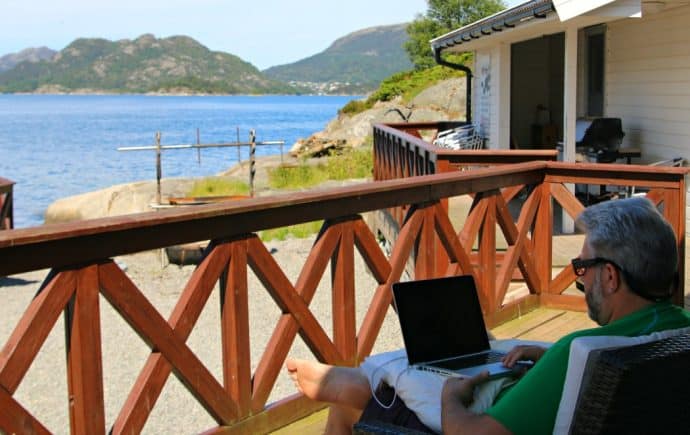 Bret blogging at our Dive Resort in Norway
Bret blogging at our Dive Resort in Norway
Step 1: How to Name Your Blog and Secure Your Domain
First and foremost, you’ll need to name your blog, which is arguably among the most important decisions you’ll make.
For some people, that’s exciting! For others, it’s the scariest part, and may take weeks or even months of research. How do you come up with a name that will stick with you for the rest of your blogging life?
Much like naming any business, product, or personal Gmail account, there are a few things to keep in mind if you want to find a successful blog name.
Choose a Travel Blog Name
Choosing your domain name is a major step in branding your travel blog. You’ll want something that’s easy for people to remember, and that resonates as closely as possible with your blog’s actual name. To that end, try to avoid using hyphens: mytravelblog.com is easier to remember than my-travel-blog-com.
Check Availability of Your Domain Name Ideas
Of course, since anyone can start a blog and anyone can buy a domain, there is a decent chance that the blog name you really want may be taken.
So before you buy the domain, you’ll want to check to see if the domain name is actually available. In the worst-case scenario, it’s best have a plan B, and perhaps even a plan C.
Once you’ve made sure that your desired domain is available, you’ll also want have a look at the various social media channels and make sure no one else has used the name there.
Your travel blog’s social media handles should also be easy for your readers to find and remember. So having something like @mytravelblog998 is not going to gain you as large a following as something simple, like @mytravelblog.
Use a Unique Blog Name
You should also have a look at other travel bloggers and try to steer clear of picking a name that is too similar to another blog.
Our advice is to steer clear of overused blogging cliches such as “nomad/nomadic,” “vagabond,” “adventurous,” and “backpacker.” There are numerous veteran bloggers who have been around for many years and therefore rank really high for those terms.
You’re better off finding something original that will allow you to carve out your own niche. You want your travel blog name to be memorable, but not confused with other, similar blogs.
Plan for Your Blog’s Future
If you’re hoping to become a professional travel blogger long-term (as opposed to just documenting a round-the-world journey), your blog’s name needs to be able to grow with you.
You may only be able to blog about your home state or region right now. But if you one day hope to travel the rest of the world, then having a name like My California Travels is not a great idea.
We’ll talk about this in more detail in our Brand Strategy section below.
Register Your Domain Name
Once you’ve settled on the name for your travel blog, you also need to choose a provider to register your domain with. Domains are renewed annually, so this cost will not recur each month.
We originally registered Green Global Travel with HostGator, who was also our hosting provider at the time. They currently offer domains starting at just $12.95 per year.
When choosing your domain name, you will need to choose whether you want a .com, .net, or a different type of domain.
Domains that end with .com are the most popular. But if you’re writing for a targeted audience in your country, you may want a domain that is specific to your geographical region.
Step 2: Find a Blog Hosting Company
Finding the right hosting company for your travel blog is essential.
We once had a hosting company [whose name we won’t mention, but it rhymes with GlueGhost] that couldn’t keep up with the volume of traffic Green Global Travel was getting. This led to our site crashing over and over again, creating frustration both for us and our readers.
Your hosting provider package will determine not only the cost of having your travel blog online, but also the speed of your site and how much space you have to build your site on. There are countless different hosting companies available, so it can be difficult to decide which one to sign up with.
Obviously we can only recommend a company we trust and have had good experiences with in the past, such as HostGator. They offer extremely affordable rates, plenty of data capacity for travel blogging beginners, and make it very easy to set up a blog.
Their web hosting packages are designed to save you money. They offer three basic options depending on how many domains you want and whether you’re a hobbyist or need professional tools.
For each of those options you can choose to pay by the month or for up to 36 months in advance. The longer the web hosting package you sign up for, the cheaper your monthly rate is.
As we’re extremely thrifty with our budget, we recommend signing up for the longer option. First off, because it will save you a lot of money in the long run. But, perhaps more importantly, it symbolizes a serious commitment to making your travel blog a success in the long-term.
When setting up your web hosting account, you’ll need to enter your domain (or register one if you haven’t already) and pick the specific package you prefer. Then you just fill in your personal details as well as payment details. Pro Tip: Pay with a credit card that earns you frequent flyer miles!
Step 3: Install the Best Platform for Blogging: WordPress
There are many different platforms you can use when creating your travel blog. But WordPress is the common favorite content management system (or CMS) among most bloggers today.
WordPress is arguably the best blog platform out there. It’s easy for blogging beginners to get a handle on, has tons of free and easy plug-ins to improve functionality, and works well for getting your blog posts to rank well in Google search.
Don’t make the same mistake we made the first time we started a travel blog. We started blogging on Joomla, a competing CMS that isn’t nearly as simple for beginning bloggers to manage. We got very little Google traffic the first year, then had to pay for an expensive site migration to WordPress.
You can start your blog off on WordPress for free, then add premium and paid features as you need. There is also a fantastic community of WordPress bloggers worldwide. Going onto professional travel blogging forums on social media will help you to find the answers to most questions that you have.
How to Install WordPress on Your HostGator Hosted Blog:
Log in to your Cpanel.
Find the Software section, then click on the quick install icon. 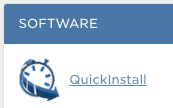
In the QuickInstalls, you’ll see One-Click Installs. 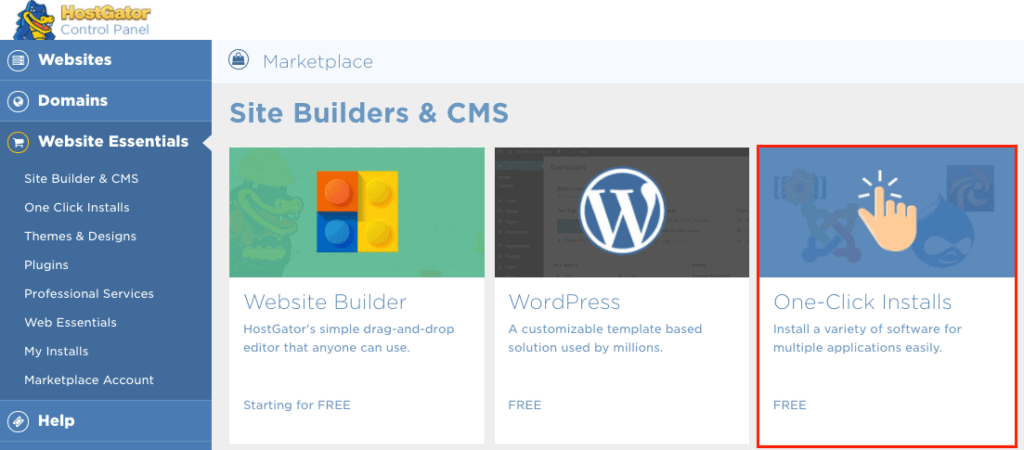
Here, find and click on the WordPress box. 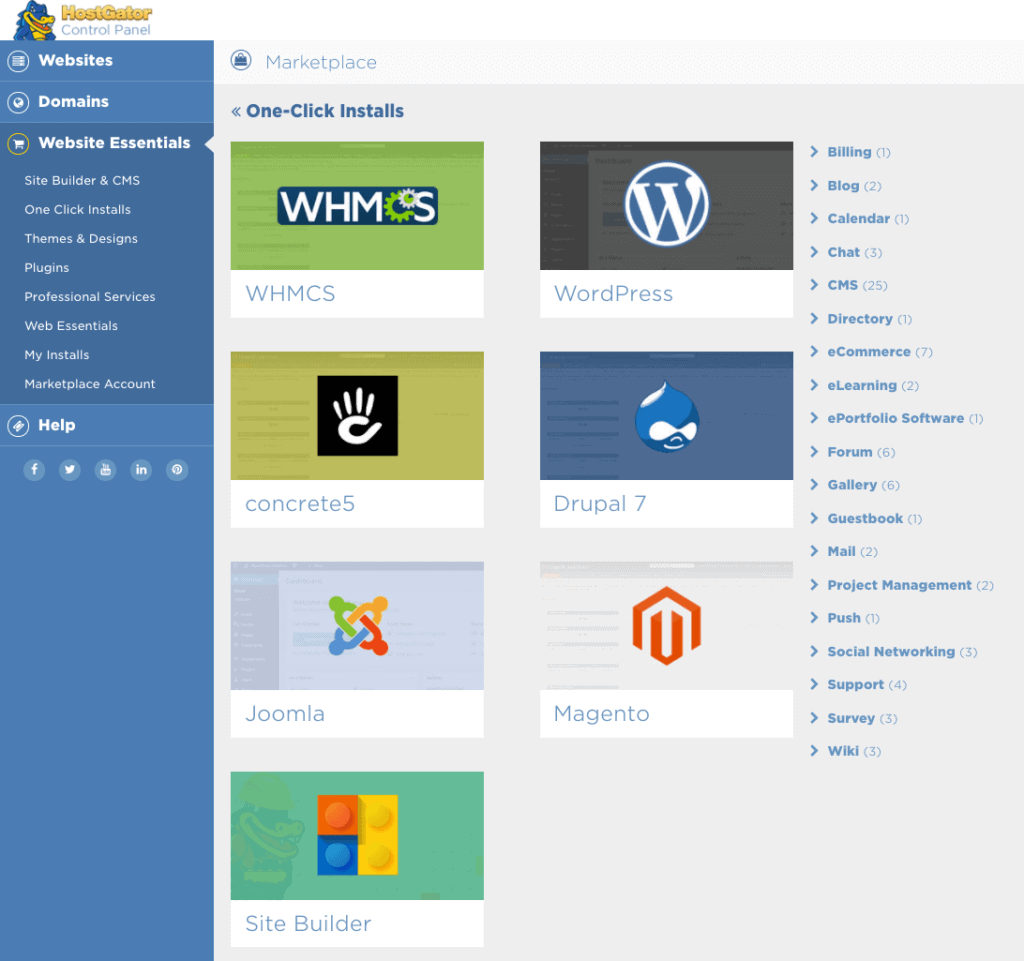
You’ll need to select your domain from the drop-down list. 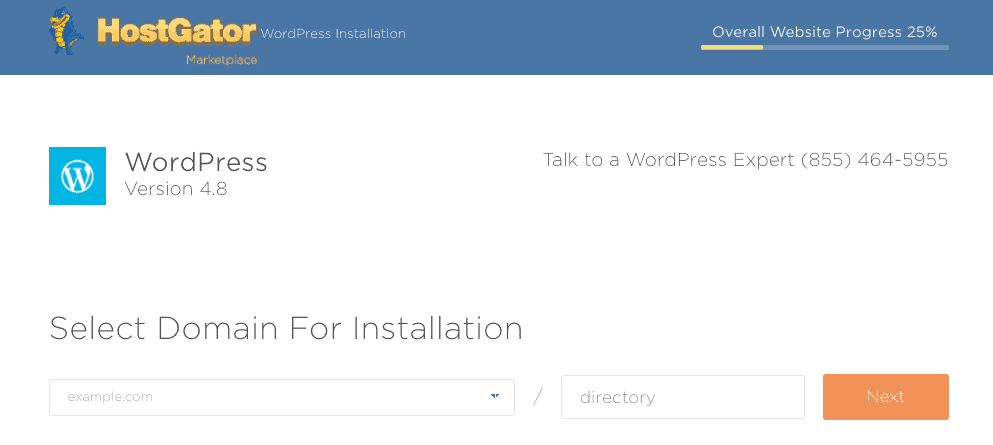
Once you’ve done that, fill in the form as it prompts. Add your blog name as you want it to display to your readers. So it won’t be mytravelblog, but My Travel Blog. 
Enter a username and password. This will be your details used to log into your site, so make sure it’s something you’ll remember. Then save the info in a secure file on your computer, phone, and even on paper in case your tech device fails.
Add your other details and ensure that the email address you entered is valid and working, as you’ll need to receive confirmation emails before your installation is done.
Click Install and you’re ready to roll!
Step 4: Choosing a WordPress Theme for Your Travel Blog
The overall look of your blog depends largely on the WordPress theme that you choose. You simply can’t create a good-looking travel blog without a good theme.
There are many different themes available on WordPress. Some are completely free, while others you have to pay a small one-time fee for. Sites like TechRadar do annual unbiased reviews of the Best WordPress Themes for Bloggers, which can walk you through the pros and cons of each.
To access the backend of your blog, type in your domain with ‘/wp-admin’ at the end, so the url (Uniform Resource Locator, a.k.a. web address) will look like this: yourdomain.com/wp-admin.
If you’re not quite ready to buy a theme, you can go to dashboard -> appearance -> themes -> add new. You’ll then see a wide variety of free themes on offer, from clean and simple designs with lots of white space to more cool and funky designs that reflect your personality.
If you’re determined to start off like a professional travel blogger, there are multiple places to find affordable paid themes. A paid theme comes with lots of extras, including support for any issues that you run into, as well as add-ons such as widgets for photo galleries, newsletter sign-ups, and more.
Most of these themes will have demos available, which offer you a more detailed template of what your new blog might look like. Demos make it easier to replace demo content with your own so that you can see the look and style of your site before you buy.
Some of the best travel blog theme websites are:
ThemeForest
Elegant Themes
CSSIgnitor
Mojo Marketplace
Once you’ve paid for the theme, you’ll be prompted to download a zip file. That zip file can then be uploaded onto your site by using dashboard -> appearance -> themes -> add new -> upload file. Once that’s done, you’re ready to actually start your travel blog!
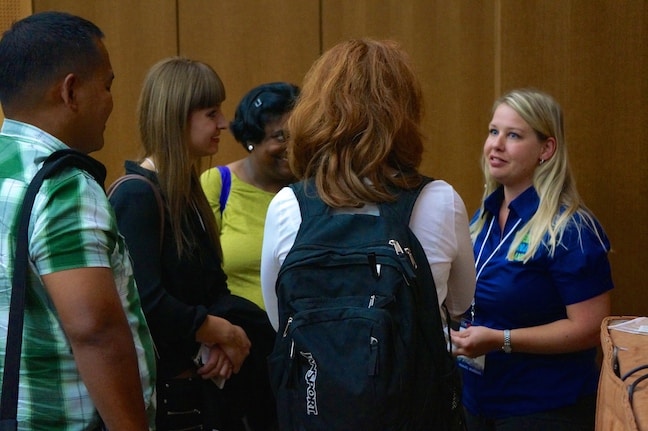 Mary answers questions about blogging at TBEX Athens (Photo by Vera Wolters)
Mary answers questions about blogging at TBEX Athens (Photo by Vera Wolters)
Step 5: Set Up Your Travel Blog Website
Now that you have your domain, hosting, and WordPress installed, this is where the real fun begins! Building your website is really not as hard as it sounds. The great thing about WordPress is that you can be a total website-building beginner and still come out with a fantastic travel blog.
You’ll start by going to your travel blog’s login page. Here you’ll use the username and password that you set up when installing WordPress to log in to the backend of your site.
Now that you have your WordPress theme installed, you’ll be able to customize the look of your website. Insert your blog’s name and logo, as well as a tagline if you have one. We’ll teach you more about how to create these elements once we get to the branding section below.
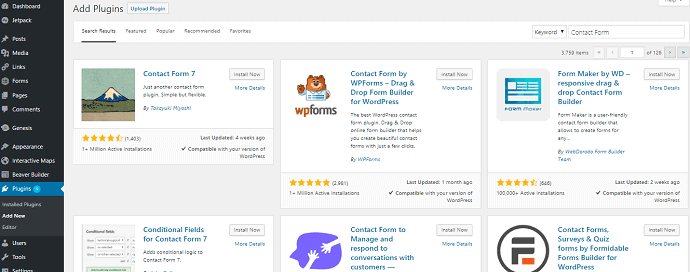
Best WordPress Plugins for Starting a Travel Blog
Plugins are a great way to add functionality to your blog. Many plugins have free options as well as premium, paid versions. To add a plugin to your site, go to dashboard -> plugins -> add new.
You will see tons of plugins available. You won’t need all the plugins: Too many plugins can slow down your site speed, which affects the user experience and can hurt your chances of ranking well in Google Search. But adding certain specific plugins will make your life easier and your blog much better!
Some of the best plugins for a travel blog we would recommend are:
Askimet – This plugin will help keep your blog safe from spam comments and other security threats. Consider it like a bodyguard for your blog. Askimet has blocked around 1,169,192 spam comments on our site in the last 6-7 years.
Contact Form – This will give you simple and easy-to-use contact forms for your contact page. You’ll want to connect it to your preferred email (your HostGator shared hosting server will allow you to host your own email) so that readers and potential business partners can contact you directly.
Jetpack – With this plugin, you’ll be able to see your site stats in a simple way, check who is viewing your blog, which pages and posts they are viewing, and where your traffic is coming from. It also adds cool widgets and opens up a whole range of free themes as well. Some bloggers don’t like Jetpack because it can slow down your site, but we personally feel the positives outweigh the negatives.
Yoast- Yoast is a blogger’s best friend when it comes to simplifying SEO. It tells you how your posts will do in the SEO world, using a simple checklist to ensure your target keyword is in your title, at least one header, text, and meta description. It also gives you suggestions on readability, as well as if there is anything missing from your post, such as images, sub-headers, etc.
There are plenty of other cool WordPress plugins, like the interactive map on our landing page that shows our readers the destinations we have covered. But, for beginning bloggers, it’s a good idea to start with the basics and then add more plugins once you’re more comfortable with the site.
Create Your Travel Blog’s Main Pages
Once you have the WordPress plugins installed, it’s time to start building the foundation of what you want your travel blog to look like.
Just as an architect draws out plans before constructing a skyscraper, you’ll want to plan out your blog’s appearance and navigation. Having great content is wonderful, but if your readers can’t find it, it might as well not exist!
You’ll want to start by deciding what information you’re going to display on what pages, and if/how they will interconnect. The most common pages are:
Home– This will either be a static page where you display the various elements of your blog (which is how we do it), or you can set it up to simply display your latest blog posts in chronological order. There’s no right or wrong way to do it. It’s all about what you prefer.
About– You’ll want to use this page to explain who you are, what your blog is about, how they’ll benefit from following you, and any other information you’d like to share. It’s also good to emphasize any expertise or relevant experience that establishes your authority. Have at least one really good photo of you (preferably without sunglasses) and your travel experiences.
Contact– This page is the perfect place for your readers to get into contact for any reason. It’s also great to have for when brands are wanting to collaborate with you. This page should include a contact form, as well as your email address, any other contact information, and links to your social media channels.
Content Categories- Everyone has a different way to organize content. But you’ll want some way for readers to explore the stories that don’t appear on the first page of your blog. Our advice is to have a few main categories, each of which breaks down into sub-categories, so that your readers can easily find what they’re looking for.
 Bret Love teaching a blogging workshop at TBEX in Costa Brava, Spain
Bret Love teaching a blogging workshop at TBEX in Costa Brava, Spain
Step 6: Set up Google Analytics for Your Blog
For those who aren’t very technically-minded (like us), this step may seem a little intimidating. But trust us, it’s not as hard as it may sound.
Setting up Google Analytics for your blog is an extremely important step in starting a blog.
It gives you great insights into what sorts of stories your audience is responding to, where your audience is coming from, and how much traffic you’re getting on a day-to-day/week-to-week/month-to-month basis.
How to Set Up Google Analytics on Your Blog:
Go to google.com/analytics.
Click on “Start for free.” 3. Then click on “Sign Up.”
3. Then click on “Sign Up.” 4. Fill in your website’s details.
4. Fill in your website’s details. 5. Once you’ve done that, you’ll be given your tracking ID. This ID needs to be added to your WordPress site in order for analytics to work.
5. Once you’ve done that, you’ll be given your tracking ID. This ID needs to be added to your WordPress site in order for analytics to work.
You can either add the tracking ID manually or use a WordPress plugin, such as MonsterInsights.
With all of that done, you’ll be able to track your website’s analytics by logging back into Google Analytics at any time.
But our advice is not to obsess over your stats too much when you’re just starting a travel blog. It can be a rabbit hole of data analysis that distracts you from what you should be doing, which is creating killer content, learning how to do SEO keyword analysis, and using social media to promote your stories.
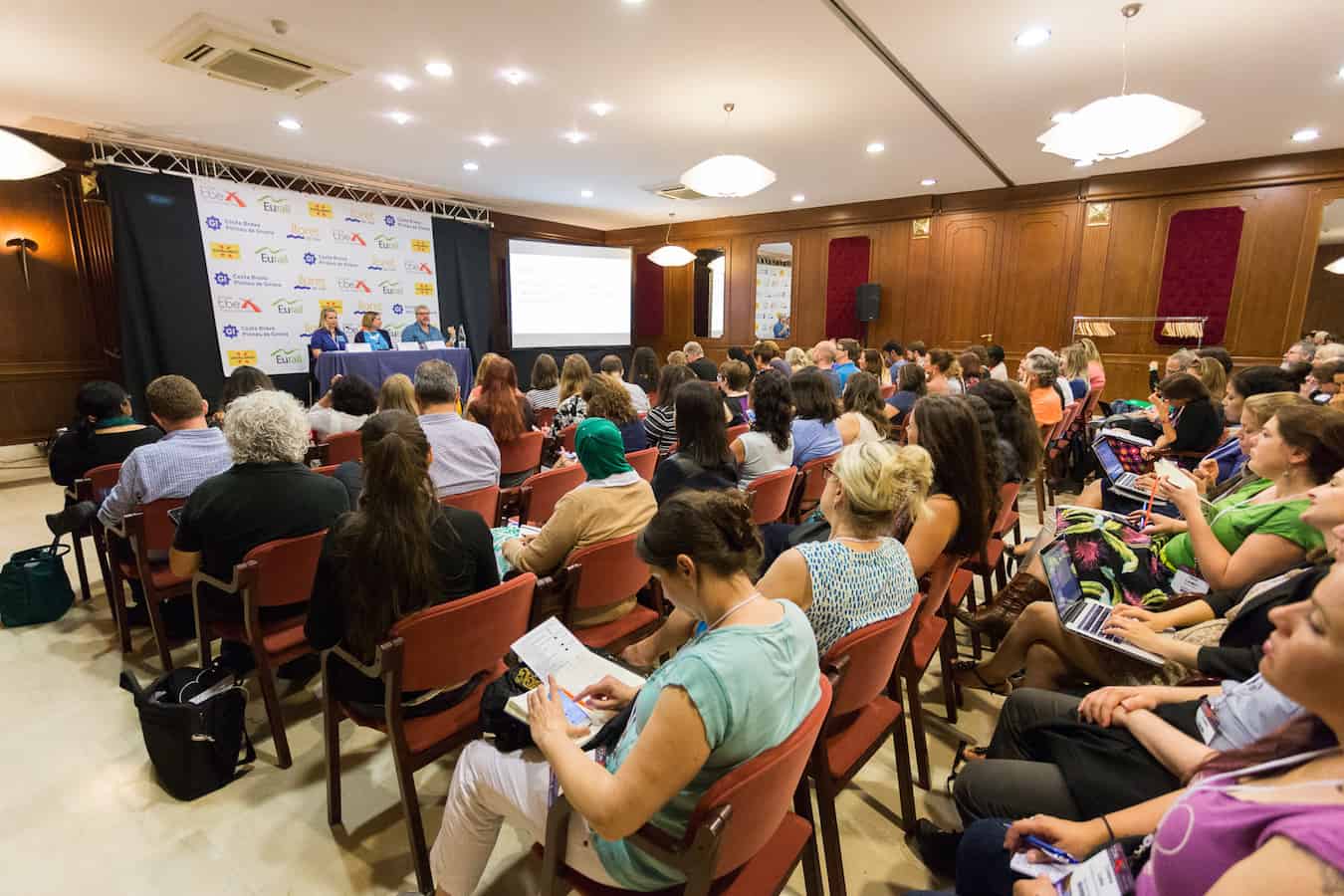 Bret Love & Mary Gabbett teaching writing skills at TBEX Costa Brava. Photo by Laurence Norah
Bret Love & Mary Gabbett teaching writing skills at TBEX Costa Brava. Photo by Laurence Norah
Step 7: How to Start Writing a Blog Post
Now– FINALLY!– you’re ready to begin the actual blogging part of starting a blog.
If you’re new to writing blog posts, having the Yoast plugin for WordPress installed will help guide you along the correct path. The best travel blog posts should be unique, authoritative, offer expert insight, and have quality images that will catch the reader’s eye.
The travel blogging field has gotten increasingly crowded in recent years, as more and more people see it as a viable professional career. That means you’ll have to work harder and smarter if you want your blog to stand out against the pack.
What travel stories can you tell that haven’t been told before? What new angles can you offer on places and experiences that other travel bloggers have already covered ad nauseum?
Whether it’s a bad experience at the Dead Sea in Jordan, a he said/she said story about climbing Nigardsbreen Glacier in Norway, or interviewing a guide who worked with Dian Fossey while hiking to see Mountain Gorillas in Rwanda, writing a successful travel blog post is all about combining creativity with providing expert insights for your readers.
But writing a blog post and hitting publish is really just the first step in content marketing– an essential skill for beginning bloggers. Now it’s time to share it. Start with your friends and family, who should be (but aren’t always) your biggest supporters.
Create social media profiles for your blog on all the major platforms (including Facebook, Twitter, Pinterest, Instagram, and YouTube). Use your blog posts to encourage readers to follow you there, and then use those channels to promote all your new content, using relevant hashtags where appropriate.
Some people enjoy engaging with other travel bloggers, whether in Facebook groups and on their social media channels. If you enjoy their work, you can comment and/or share it if it’s relevant to your audience. But it’s best never to do this with any expectation of reciprocation. Professional travel bloggers are very wary of beginning bloggers who ask them to share their work.
Much better is to reach out to destination marketing organizations (DMOs), hotels, restaurants, and/or tour operators you cover in your stories. Since they’re being promoted for free in your work, it’s in their best interest to share it with their followers. They don’t always do it, but it doesn’t hurt to ask politely.
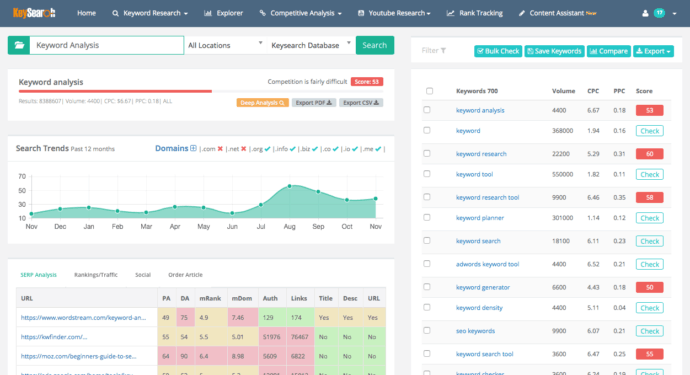
Step 8: Use Keysearch to Get More Traffic
Though promoting your content on social media can have a significant impact on getting visitors to your travel blog, learning SEO (search engine optimization) is even more important. Especially for beginning bloggers who haven’t yet built up a following.
SEO is the process of affecting the online visibility of a website or web page in a search engine’s organic, unpaid results. The higher your story ranks on a search engine such as Google, and the more frequently your website appears in its search results, the more visits you’ll receive from its users.
Great SEO starts with choosing great target keywords when writing a blog post. For that, you have to do keyword analysis. In our opinion, KeySearch is arguably the single most important tool for bloggers who want to get more traffic from Google.
We started using KeySearch exclusively last December as part of a new strategy for SEO optimization of our old content. As a result, our traffic numbers have exploded, from 75,000 page views in November 2017 to more than 585,000 page views in November 2018.
We’ll go much deeper into how to use this keyword tool effectively in a future blog post on SEO and content marketing. But it basically allows for in-depth analysis of countless keywords in terms of competition and potential traffic benefits to your site.
KeySearch is very affordable for beginning bloggers (much more so than competitors like Ahrefs and SEMrush), with starter plans available for around $17/month. If you want to sign up using our affiliate link and discount code KSDISC, you’ll save an additional 20%.
READ MORE: Using Journalism Skills to Build Your Travel Blog

TRAVEL BLOGGING BUSINESS SURVEY
If you start a travel blog with the intent of becoming a full-time professional, it’s extremely important that you start treating it like a business as soon as possible.
Working on both sides of the divide between PR/Marketing and professional travel blogging (as we do with our content marketing agency, Green Travel Media), it’s been shocking to realize just how much miscommunication exists around the business of blogging.
PR/marketing reps in the travel industry often decry the lack of professionalism and poor ROI (return on investment) of their partnerships with bloggers. They share tales of diva-like behavior, rookie mistakes, irresponsible follow-through, and an overall focus on getting free stuff over business acumen.
On the other side, many travel bloggers feel undervalued by an industry that has been slow to adapt to digital media. They claim that these companies are simply choosing the wrong bloggers to work with. They blame brands for focusing on easily-gamed stats (traffic, social media followers, etc.) rather than more important intangibles, such as brand alignment, content quality, and professionalism.

According to a recent study conducted by Nielsen, influencer marketing content delivers an ROI 11 times higher than traditional forms of digital marketing. But both sides of the influencer marketing divide have ample room for growth in improving the business of blogging. So we decided to gather some data that might help us develop a better blueprint for professional travel bloggers.
In 2014 and 2017 we conducted in-depth surveys on brand/blogger partnerships for our talks at TBEX, the world’s largest travel blogging conference. We sent them to over 2000 travel industry PR and Marketing representatives, hoping to see how the industry evolved over three years.
These two surveys received over 250 responses from some of the world’s leading DMOs and travel brands. Many of these companies are at the forefront of working with travel bloggers. So we thought it would be important to get their insights on where brand/blogger relationships are now, and where they might be headed in the future.
Here, we’ll share some of our more significant data…
BUSINESS OF BLOGGING SURVEY RESULTS
1) In the past 12 months, how often have you worked with bloggers?
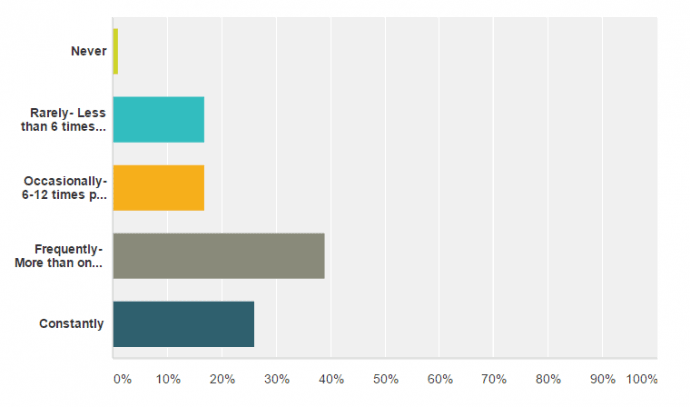
Just 1% of our respondents said they’d never worked with travel bloggers before, and only 17% said rarely. But 39% of these companies had worked with bloggers more than once a month, and 26% had worked with bloggers constantly. In 2014, 36% worked with bloggers more than once a month, while only 19% worked with bloggers constantly. So these numbers are slowly but steadily climbing.
2) Do you anticipate you’ll work with bloggers more frequently in the coming year?
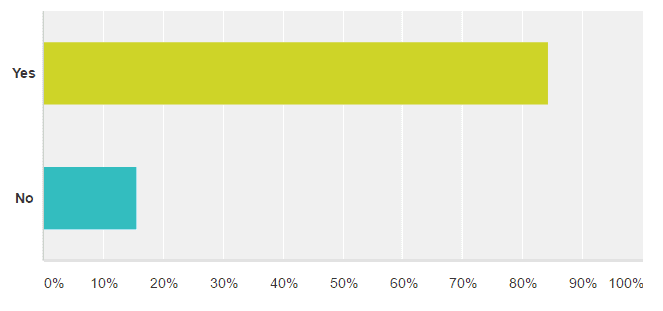
A whopping 84% of the brands we surveyed anticipated they would work with bloggers even more often in the coming year. This marks a 2% increase on our 2014 survey result. This suggests that there will be continue to be more and more opportunities for professional travel bloggers in the near future.
3) How do you find bloggers to work with on a given campaign?
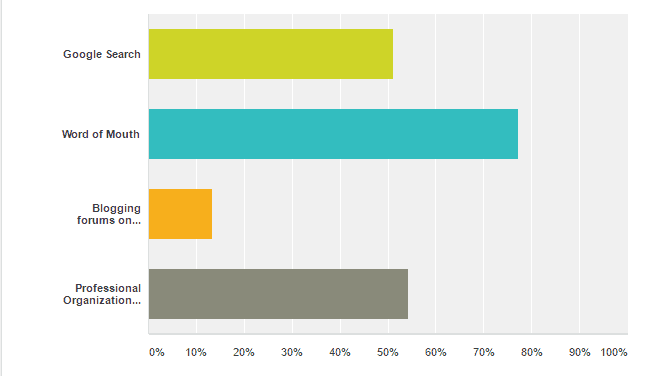
Word-of-mouth was the most popular response, with 77% of our respondents using that method. Around 54% used professional organizations and events, such as the Society of American Travel Writers or the TBEX Conference. And 51% relied on a simple Google search. In short, the professional reputation of a travel blogger plays a key role in ensuring they get partnership opportunities.
4) On a scale of 1-10, how important are these stats when selecting which bloggers you will work with?
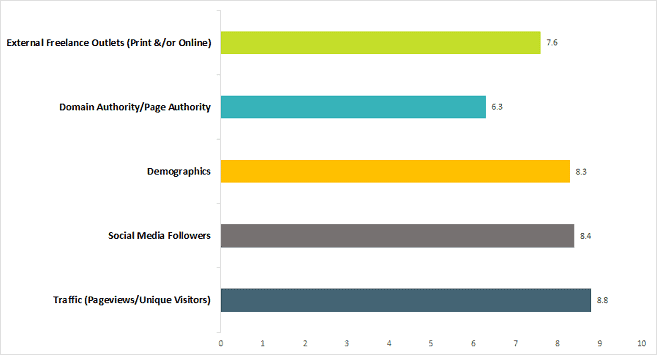
Unsurprisingly, Traffic and and Social Media Followers were ranked highest here, despite the fact that these two statistics are the most easily gamed by bloggers. Demographics and external freelance outlets ranked third and fourth, respectively. It seems that many PR/Marketing reps do not yet understand the value of Domain Authority, which measures the prestige of a website, the quality of its content, and how it will compete in search engines for a given topic. We believe this metric will become increasingly important in the future in evaluating a blogger’s true influence over purchase decisions.
5) On a scale of 1-10, how important are these intangible elements when choosing which bloggers you will work with?
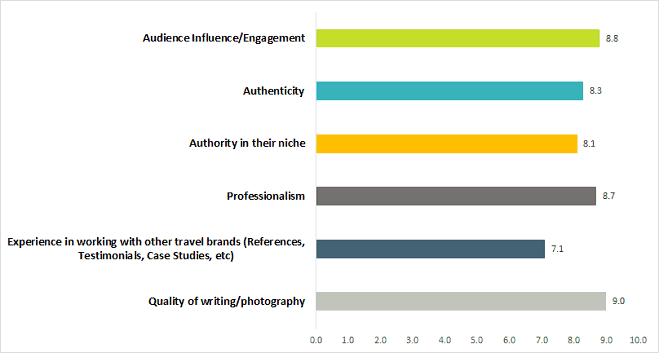
One of our more intriguing survey results was the ranking of “Intangible” factors. With an average of 9.0, Content Quality rated higher on the respondents’ scale of importance than Traffic (8.8), while Influence/Engagement rated equally important as Traffic. And Professionalism, which received an average of 8.7, rated higher than Social Media Followers (8.4). We were pleasantly surprised to see so many of these intangibles ranking higher than some of the hard stats.
6) Which of the following services have you paid bloggers for in the last year?
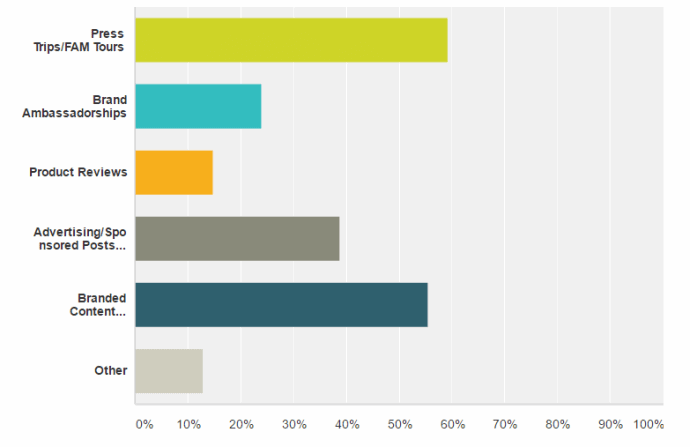
The most important statistic here is one you won’t see on the chart: 46% of all respondents left this question blank, insisting in the comments that they don’t pay bloggers at all. Of those who did respond, 59% paid for Press Trips/FAM Tours, 56% paid for Branded Content creation (blog posts, photos, and/or videos); 39% paid for advertising (usually in the form of sponsored posts and paid social media promotion); 24% paid for Brand Ambassadorships; 15% for Product Reviews; and 13% for other things (including e-books, Instagram takeovers, and attending meet-ups).
7) What percentage of your marketing budget is earmarked for working with bloggers?
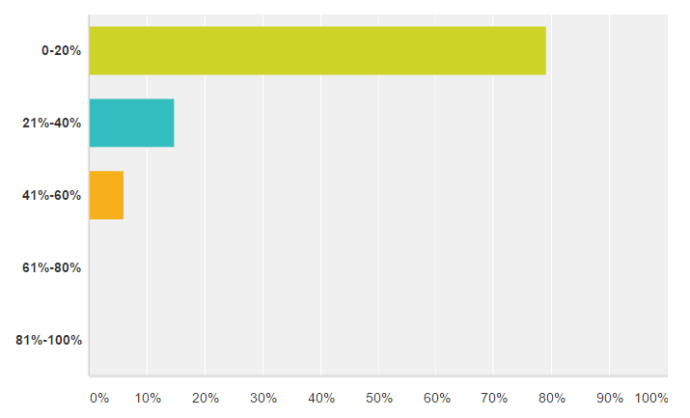
Here’s the bad news: 79% of our respondents said that less than 20% of their budget goes for paying bloggers, and many of those had no budget whatsoever. Around 15% of them use 21-40% of their marketing budget to pay bloggers for their services, and only 6% had 41-60% of their total budget earmarked for blogger campaigns.

BUSINESS OF BLOGGING SURVEY INSIGHTS
There are some simple conclusions about the travel blogging industry that we can draw by comparing the results of our 2014 and 2017 surveys:
• PR and Marketing reps are working with bloggers more often now than they were four years ago, and most expect that frequency to gradually increase in the years to come.
• Bloggers’ traffic and social media followers remain important stats, but many companies are placing increasingly high value on demographics and other aspects of brand alignment.
• Intangible elements such as authenticity, authority, and professionalism are now considered just as important as traffic, which marked a major shift since our first survey. (Coincidentally, in 2018 Google updated its algorithm to prioritize EAT– expertise, authoritativeness, and trustworthiness.)
• There are more and more companies wanting to work with bloggers, but most of the brands we surveyed have little to no budget for paying them.
• Those companies that do pay bloggers primarily hire them for press trips/FAM tours, creating branded content, and advertising (usually in the form of sponsored posts or paid social media promotion).
The problem for professional bloggers is that, with thousands of new people starting a travel blog each year, there’s ever-increasing competition for a relatively small pool of paid projects.
Fortunately, we have developed our own strategy for long-term blogging success that’s based in the concept of business branding, which can help even beginning bloggers to stand out.
READ MORE: Bret & Mary- A Story About Love (How Green Global Travel Was Born)

BRANDING STRATEGY FOR TRAVEL BLOGGERS
Branding, whether personal or organizational, is basically a means of communicating who we are and what we stand for. It’s about defining the unique identity that separates you and your business from everyone else.
Branding is an organic process through which you can build your business on a solid foundation, providing the roots from which your blog can grow sustainably over time. Think of it like a map: It’s not just about where you are now as a blogger, but a guide to help get you wherever you want to go.
Branding also provides a blueprint for every decision you make about your blog in the future. “Does this choice help me achieve my mission for my brand?” If the answer is yes, then go for it. If not, you may want to consider the Opportunity Cost involved.
Defined as “the loss of potential gain from other alternatives when one alternative is chosen,” Opportunity Cost is a way of examining the consequences of every choice we make, including the positives that result from our decision and the negatives that come from not taking a different path.
For example, were recently offered an all-expenses-paid press trip to Saudi Arabia for a major auto racing event being held there. But it’s not really eco-friendly, to say nothing of the sociopolitical ramifications of visiting that country, and therefore not the best fit for Green Global Travel.
Every decision we make for our travel blogging brand is either a deposit or a withdrawal from the trust invested by our readers. And like any investment, depleting the account balance causes people to lose interest. When it comes to our brand, we always prefer to put long-term strategy over short-term gain.
To put a finer point on it, branding provides a tangible way for people to understand and recognize your identity; differentiates you from others in your niche; communicates your values and ideas effectively; and distills all the elements of your vision for your business into an easily digestible whole.
It’s not about following everyone else’s path to success, but blazing your own trail. Here’s a look at the 10 most important steps in creating a brand that will lead to a long-term sustainable blogging business.
READ MORE: How We Quadrupled Our Travel Blog Traffic in 6 Months
 Bret Love teaching a standing-room-only Branding session at TBEX Athens. Photo by Laurence Norah
Bret Love teaching a standing-room-only Branding session at TBEX Athens. Photo by Laurence Norah
10 Steps for Building a Brand For Your Blog
Mission Statement
Brand Name
Tagline
Logo
Web Design
Content
Social Media
PR Outreach
Native Advertising
Freelance Work
1. Mission Statement
Your Mission Statement defines your purpose for existing, spelling out your goals and guiding your decisions. It should answer some pretty deep questions about your blog as succinctly as possible:
Who are you as a business? What drives you? Who is your target audience, and why should they care about you? What are the defining values that set you apart? The best brands always stand for something. This is a great way to explain what it is that makes you and your blog tick.
Our mission statement is the first thing readers see: We believe that Ecotourism– responsible travel that conserves the environment and improves the well-being of local people– is the future of travel. Our mission is to share our deep love for Ecotourism adventures, inspire people to travel and live more sustainably, and encourage everyone to do their part to make the world a better place.
2. Brand Name
It’s been said that choosing a Brand Name is only 20% creative & 80% practical. Your blog’s name is one of your most valuable assets, so it’s worth taking the time to research thoroughly. You want something that tells your story and helps you stand out in the crowd.
When we came up with Green Global Travel, we brainstormed a whole list of different ideas, researched which keywords were most search-friendly (and had URLs available), and then picked the one that sounded best in a linguistic sense. Green Global Travel just kind of rolled off the tongue.
One last suggestion: Make sure your brand name reflects your mission statement well, but try not to box yourself into a corner. You probably won’t be a 20-something, Solo, Nomadic, Round-the-World Backpacker forever…
3. Tagline
Your Tagline is a like a 10-second elevator pitch in which you summarize what your brand is all about. When done right, it should clearly communicate your unique brand identity in 10 words or less.
Because our site focuses on conserving nature, wildlife, culture, and history, we started our blog with the tagline, “Saving the world, one story at a time.”
Taglines are the easiest part of your branding to change, so don’t be afraid to adapt it as your brand grows. Our current tagline is, “Ecotourism is an adventure that changes lives.”
Other examples include our friends at the Center for Responsible Travel, who went with “Transforming the way the world travels,” while the Nature Conservancy’s tagline is “Protecting Nature. Preserving Life.” In each case, the tagline is short and easy to remember, and the mission is clear and concise.
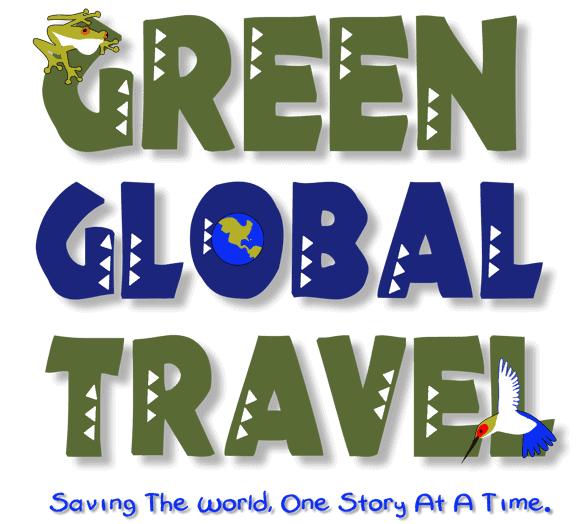
4. Logo
Think of your Logo as the face of your travel blogging business. It should be a visual representation of yourself, your goals for your business, and your blog’s reason for being.
For Green Global Travel’s logo, we chose an African-inspired font to reflect the fact that I first learned about ecotourism in South Africa.
Then we incorporated a tree frog and hummingbird to pay tribute to Costa Rica, where we originally came up with the idea for the site. We used the colors green (trees and grass) and blue (skies and ocean) to symbolize Nature.
There are five different types of logos– wordmarks (such as Google), letterforms (Yahoo), emblems (LEED), pictorial marks (Apple) and abstract marks (Nike). Logos also evolve over time in order to stay current with design trends. But the best ones, such as IBM, remain virtually unchanged.
5. Web Design
Websites are considered the #1 branding tool– not just for blogs, but for business in general. And because web technology is changing so rapidly, Web Design is the branding element likely to change most frequently over time.
Many of the world’s top travel blogs undergo huge design changes every 3-5 years. We completely redesigned ours in 2017.
There are many things to consider when planning your site design, including the graphics, typography, imagery that reinforces your Brand identity, ease of navigability, and mobile responsiveness.
It’s also worth researching the psychology of color, as studies have shown that 60% of consumer decisions to purchase a product are based on color. How do the main colors of your site influence your readers’ feelings?
6. Content
Content has been a HUGE factor in Green Global Travel’s success. As mentioned above, 91% of DMOs, tour operators, and PR firms we surveyed said that content quality is the most important intangible factor in determining which bloggers they want to work with.
So clearly, the stories we tell and the photos and videos we share on our blogs and social media channels are a critical element in the branding process.
Every story on your site should help to reinforce brand identity in some way, because Branding provides both you and your audience with a clear map of expectations.
To reinforce your brand with quality content, we recommend telling impactful stories that make it clear why readers should care; exploring storytelling forms that appeal to different types of readers in your niche; being transparent when there is sponsorship involved; avoiding too much self-promotion; and making sure that any guest posts align with your mission.
READ MORE: 10 Simple Wildlife Photography Tips

7. Social Media
To quote branding expert Matt Dunn, “Social Media is an amazing tool through which we can build, energize and empower communities to support our Brand.”
Social media is not just about sharing your own stories and engaging with your followers; it’s also an opportunity to establish your brand as a leading authority in its niche.
We always recommend that our clients use social media to be a content curator, not just a creator. By sharing stories from other great content creators within your niche, you convey to your followers that they can trust you as an expert authority on the types of content they’re interested in.
Social media can also be strategic as well: Sharing stories from a company or blogger you want to work with is a great way to establish a connection. When we write about a DMO, environmental charity, or tour operator, tagging them on social media often leads to them sharing our stories with their audience.
8. PR Outreach
PR Outreach has been a huge factor for us in terms of creating sponsorship opportunities, press trip partnerships, freelance assignments, and more. Because of my print media background, connecting with travel industry PR people was part of our branding process from the beginning.
Before we even started our travel blog, we made a list of every company in our niche that we admired, aligned with ideologically, or wanted to work with. We included DMOs, tour operators, gear manufacturers, agencies, non-profit organizations, and media outlets.
Then we researched the PR/Marketing reps from each company to find their name, email address & other contact info, which Mary put into a spreadsheet. Whenever we have big news to announce–maybe a few times a year– we’ll send out a press release to our contact lists.
It usually takes at least 3 to 5 press releases to get someone’s attention. But by slowly and steadily cluing people into what your blog is about and marking the milestones on your journey, you eventually define your Brand in their mind as a leading authority. In essence, you’re helping PR reps do their job.
As a bonus, these press releases can also lead to media coverage for your blog, which provides broader exposure and allows you to reinforce your Brand message through other channels.
9. Native Advertising
Sponsored posts can be a thorny topic in the travel blogging world, and everyone has their own opinions about if, and how, they should be done. We’re not here to judge anyone else’s business model, but we believe in full disclosure and have found an approach that works for us.
A few years ago I became fascinated by the concept of Native Advertising, which is designed to be seamlessly cohesive with your blog’s other content. In these types of sponsored posts, the story isn’t really about the advertiser, but instead is designed to help your audience.
For example, we sold sponsorship of an in-depth story on the History and Different Types of Glamping to an upscale dude ranch. We sold sponsorship of a story on The Best Road Trips in the World to a company that rented camper vans. The best part is, once the sponsorship period is over, the sponsor’s name and link are removed and you still have a great post that can generate ad revenue for years!
We also sell sponsorships of our trips to companies who align with our Brand and want to reach our audience. The Oslo-based Helly Hansen clothing sponsored our Fjords of Norway road trip, while Enterprise Rental Car sponsored our trip to Great Smoky Mountains National Park. Again, it’s all about Brand alignment and finding a natural fit that doesn’t interfere with content quality.
10. Freelance Work
For a long time, there was a significant portion of my Freelance Work that wasn’t well-aligned with the GGT Brand. But, as we discussed earlier, having freelance outlets is a HUGE factor for attracting press trips and other partnerships.
Over the last few years we’ve focused our efforts on only pitching outlets that would allow us to cover our core topics– ecotourism, adventure, conservation of nature/wildlife, and indigenous culture– for a broader audience than we can reach with our site.
We had to work our way up the ladder, which occasionally meant writing for less than our normal freelance rate or working for free (for non-profits such as World Wildlife Fund and Sustainable Travel International).
But, going back to what we said about considering opportunity cost when making decisions, this “free labor” was a strategic decision that paid off incredible long-term dividends. Our agency, Green Travel Media, signed a content marketing deal with International Expeditions in 2014 that was worth more than we made in all of 2013! And we’ve been their content agency of record ever since.
READ MORE: How I Became a Professional Writer
 Curaçao’s Historic Willemstaad, July 2010 (one of our first press trips as travel bloggers)
Curaçao’s Historic Willemstaad, July 2010 (one of our first press trips as travel bloggers)
20 TRAVEL BLOGGING TIPS FOR BEGINNERS
Using these branding strategies and following our business instincts, we’ve made a lot of smart choices, a few dumb mistakes, and learned an awful lot about blogging along the way. Here, we share some of our best travel blogging tips for beginners. Hopefully, they’ll help you as you create your travel blog and embark upon the entrepreneurial adventure of a lifetime!
1. If you want to be a professional travel blogger, focus on your passion. Whether it’s a specific style of travel, a specific region, or a specific activity you enjoy in destinations around the world, make sure it’s something you’ll love long-term. The more unique your blog is, the more you’ll standing out.
2. It’s relatively easy to start a travel blog these days, but it takes a lot of work to build a sustainable blogging business. Strategizing a solid business plan will make things easier as your blog grows and evolves. Don’t worry about having a rigid structure: Just outline your big picture goals and the steps you foresee taking in order to achieve them. This can be a great map towards the future you want.
3. It’s not enough these days to be a solo travel blogger, adventure travel blogger, or responsible travel blogger. The industry has grown too much and gotten too crowded to rely on niche (or personality) alone. These days you need to build a solid brand. Make sure your blog’s name, logo, design, mission statement, and content all work together to define your brand, or others will define it for you.
READ MORE: European Travel Guru Rick Steves on Travel Blogging
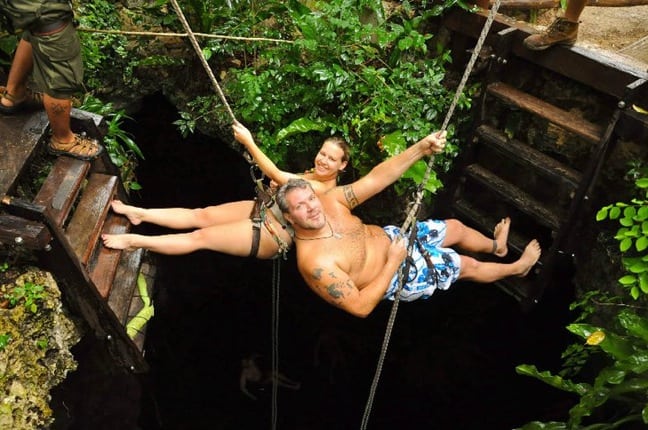 Rappelling in Mexico’s Riviera Maya, October 2010
Rappelling in Mexico’s Riviera Maya, October 2010
4. Quitting your job to travel sounds great, but most people who start a travel blog don’t make much money. In fact, 48% of professional travel bloggers make less than $15,000 a year, while 24.8% make less than $30,000/year. In short, 72.8% of all professional travel bloggers make less than $15 an hour. If you don’t have a lot of savings, keep another source of income to give your blog time to grow.
5. ALWAYS put your readers and the story first. Getting advertisers or sponsors are great, but building a strong community of people who are actively interested in your work is what will keep the advertisers and sponsors coming back to work with you. Focus on strengthening your storytelling by honing your journalism skills, and your brand will inevitably benefit.
6. It’s important to study what successful travel bloggers have done before. But this business is constantly changing, and it’s often the innovators rather than the imitators who get ahead.
READ MORE: Jeff Greenwald, the World’s First Travel Blogger
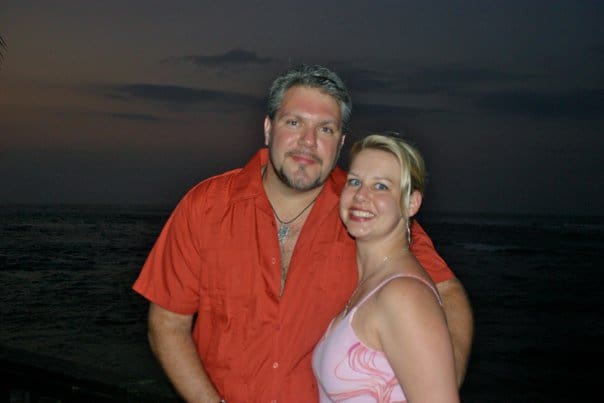 Enjoying a Dominican Republic Sunset, February 2011
Enjoying a Dominican Republic Sunset, February 2011
7, When it comes to blogging, nobody does EVERYTHING well. It’s important to know your strengths and weaknesses. Consider paying others to do the work you either can’t do, or simply don’t like to do. We’re good at content marketing and SEO, but we suck at web design and the technical side of running a site, so we hire others to do it for us.
8. Don’t be afraid to reach out to other bloggers to ask for help. One of the reasons we started the Business of Blogging Facebook group back in 2012 was that we saw too many veterans getting snarky with newbies who asked for travel blogging tips. Not every blogger will respond positively, but those who do tend to provide really sound advice based on years of experience.
9. Once you learn how to be successful in travel blogging, pay it forward. Sharing knowledge and sharing stories from other bloggers who fit your brand establishes good karma, makes you a content curator, and helps build a stronger travel blogging industry. As it grows, all truly professional travel bloggers benefit, and there’s plenty of work and money to go around.
READ MORE: Andrew McCarthy on Travel Blogging, Fear & the Journey of the Soul
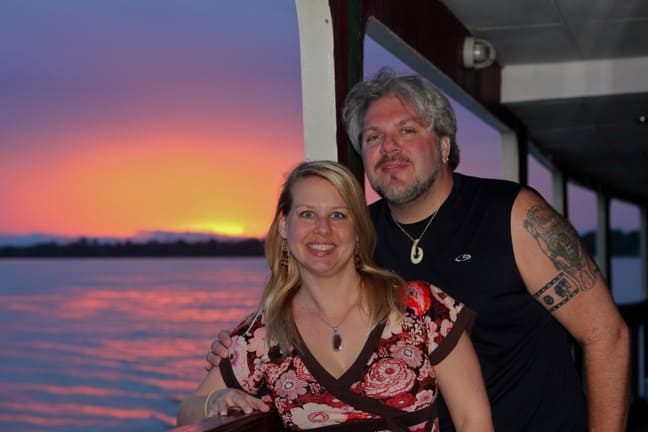 Sunset in the Peruvian Amazon, February 2012
Sunset in the Peruvian Amazon, February 2012
10. Try not to waste too much time comparing yourself to others. There will ALWAYS be someone whose blog grows faster and becomes more successful than yours. Stay in your lane, follow your passion, and focus on building the best travel blogging brand you can build, and success will come in time. You’ll find that the biggest challenge is simply outlasting the competition.
11. Never stop learning about the business of blogging, because it’s always changing. Read articles about the specific skill sets you want to master, take online courses, go to conferences and workshops in order to improve yourself. We didn’t master SEO until 2017- seven years into our blogging career! Education, dedication, and persistence are the keys to growth and success.
12. It’s hard, but try not to focus too much on stats, especially in the early days after you first start a travel blog. It’s a distraction from what really matters, which is creating quality content. Then you can learn how to use the tools of the trade we discussed above to help build your traffic.
READ MORE: Don George on Travel Blogging, Writing & “Working for Exposure”
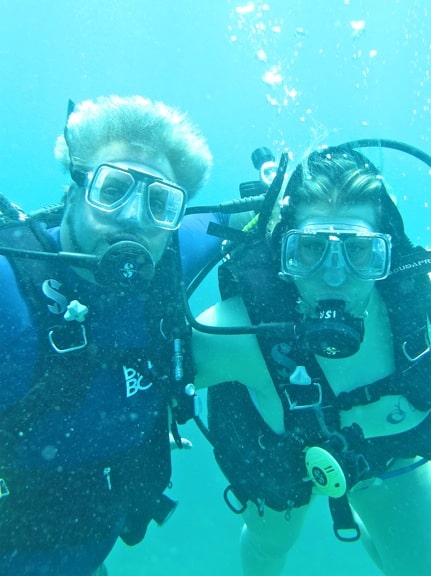 Diving Panama’s Coiba National Park, April 2012
Diving Panama’s Coiba National Park, April 2012
13. Try to listen to all of the blogging advice that will inevitably come your way. But it’s also important to know when to ignore it completely. People can only tell you what works in their experience, not yours. You ultimately have to find your own path and define what blogging success looks like for you.
14. Please, for the love of all that is good and holy in this world, do not use the word FREE. If you’re getting a comped press trip, tour, or product, there is always an expectation of coverage in return. Call it a barter, an exchange, a trade of goods and services, but THERE IS NO SUCH THING AS FREE.
15. The world does not need any more travel blogging divas. We heard so many horror stories about blogger behavior from our industry surveys, it was truly shocking. Nobody likes it (especially other bloggers), it makes you look like an asshat, and believe me when I tell you that word in both the blogging and PR industries travels fast. There really is a blacklist!
READ MORE: Peter Greenberg on the Travel Business, Travel Blogging & Budget Travel
 Making in Splash in Dominica’s Emerald Pool, June 2012
Making in Splash in Dominica’s Emerald Pool, June 2012
16. Starting a travel blog and traveling the world is an amazing thing, but it’s not the only thing that matters. We’ve watched a lot of full-time nomads get burned out and quit the industry entirely over the years. Finding balance is important if you want your blog to be a sustainable long-term business.
17. Travel blogging makes you a public figure, and everything you do (whether online or in person) is basically in the public domain. Conduct yourself accordingly (especially at travel conferences, where some attendees tend to party too hard), or you risk being derided as the Lindsey Lohan or Kim Kardashian of the blogging world.
18. Travel blogging can be a lonely life, so it’s important to find your tribe and be part of a supportive community. Facebook groups like The Business of Blogging, We Travel We Blog, and DNW- Making Money From Blogging are a great place to start, but small mastermind groups also work well.
READ MORE: Thoughts on Travel Blogging, Suicide and Living the Dream
 Wadi Rum Desert, September 2012
Wadi Rum Desert, September 2012
19. The more you succeed as a travel blogger, the more haters you’ll likely attract. And more often than not it seems to come from other bloggers! It’s important to remember that their hate is never about you, but about whatever is going on with them– jealousy, feelings of inadequacy, whatever. It’s important to understand it, but of course that doesn’t excuse it.
20. Your blogging brand– your website, your social media channels, etc.– are yours to control. Constructive criticism is one thing, but don’t let the trolls and haters be abusive or disrespectful of you, your brand, or your readers on your turf.
If you’ve read this far, we hope you’ll find this story helpful as you create a travel blog and build your travel blogging business. We wish you the best of luck with all your travel blogging endeavors, and look forward to meeting you at a travel conference soon! –Bret Love & Tammi Dooley
This post contains affiliate links. But our opinions are our own, and we will never compromise the integrity of our relationship with our readers.
The post How to Start a Travel Blog (& Build a Successful Travel Blogging Business) appeared first on Green Global Travel.
Read more: greenglobaltravel.com
